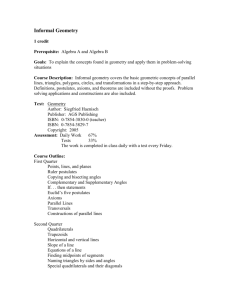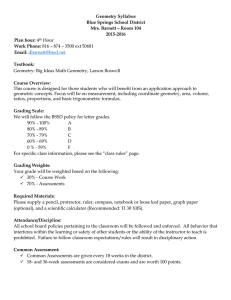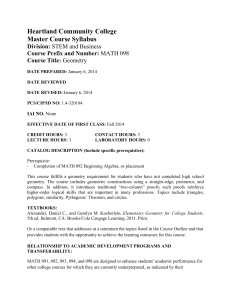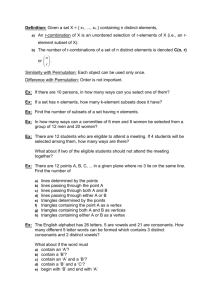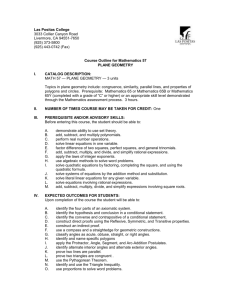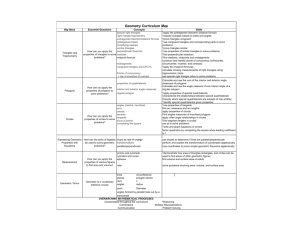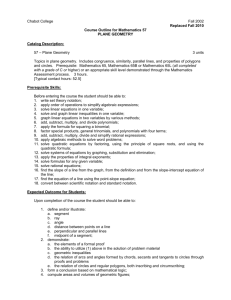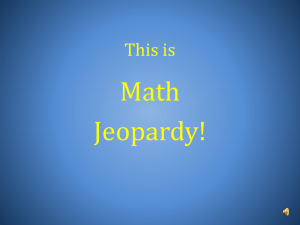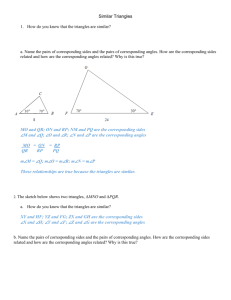GEOMETRY
advertisement
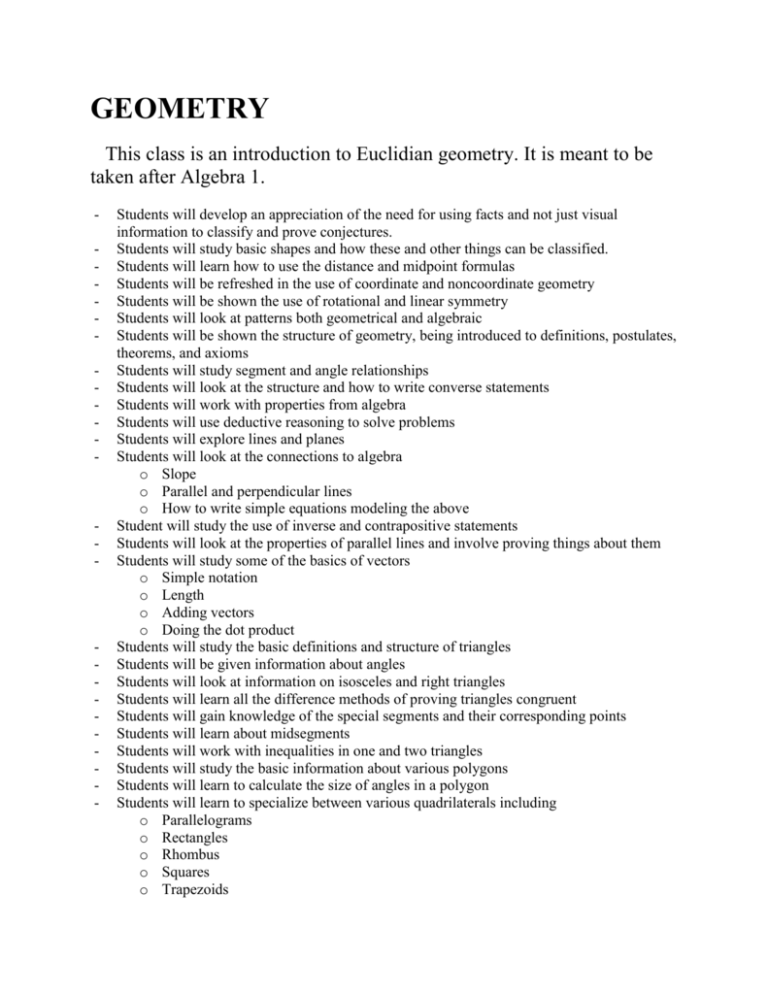
GEOMETRY This class is an introduction to Euclidian geometry. It is meant to be taken after Algebra 1. - - - Students will develop an appreciation of the need for using facts and not just visual information to classify and prove conjectures. Students will study basic shapes and how these and other things can be classified. Students will learn how to use the distance and midpoint formulas Students will be refreshed in the use of coordinate and noncoordinate geometry Students will be shown the use of rotational and linear symmetry Students will look at patterns both geometrical and algebraic Students will be shown the structure of geometry, being introduced to definitions, postulates, theorems, and axioms Students will study segment and angle relationships Students will look at the structure and how to write converse statements Students will work with properties from algebra Students will use deductive reasoning to solve problems Students will explore lines and planes Students will look at the connections to algebra o Slope o Parallel and perpendicular lines o How to write simple equations modeling the above Student will study the use of inverse and contrapositive statements Students will look at the properties of parallel lines and involve proving things about them Students will study some of the basics of vectors o Simple notation o Length o Adding vectors o Doing the dot product Students will study the basic definitions and structure of triangles Students will be given information about angles Students will look at information on isosceles and right triangles Students will learn all the difference methods of proving triangles congruent Students will gain knowledge of the special segments and their corresponding points Students will learn about midsegments Students will work with inequalities in one and two triangles Students will study the basic information about various polygons Students will learn to calculate the size of angles in a polygon Students will learn to specialize between various quadrilaterals including o Parallelograms o Rectangles o Rhombus o Squares o Trapezoids - - - - - o Kites Students will be shown the congruence methods for polygons Students will study more about symmetry and specialize in various transformations Translations Rotations Reflections Glide reflections Students will study frieze patterns and how the above transformations can make patterns Students will gain knowledge about similarity Students will do work with ratios and proportions as they relate to geometry and geometric figures Students will work with similar triangles and other polygons Students will work with dilations and perspective drawings Students will explore and define right triangles Students will use the Pythagorean Theorem to both find sides and prove triangles are right Students will study special right triangles o 45-45-90 o 30-60-90 Students will study trig ratios as they relate to right triangles o Sin o Cos o Tan Student will explore and define circles Students will learn and prove information about o Tangents o Central angles and arcs o Chords o Inscribe angles o Other angles formed by a circle and tangents, secants and chords o Equations of a circle Students will determine and understand the difference between area and perimeter Students will use formulas to find the area and perimeter of of o Triangles o Squares o Rectangles o Rhombuses o Trapezoids o Kites o Circles (arc length and sector area included) o Areas of similar polygons Students will study three dimensional figures Students will do surface area and volumes of o Cylinders o Prisms o Cones o Pyramids - o Spheres Students may study loci both in a plane and in space MULTICULTURALISM – Students will do multicultural worksheets as they relate to the material WRITING – Students will be asked to define various geometric terms and ideas on tests and quizzes As it relates, students will do various problems solving activities which also involve the concepts of geometric proofs.
